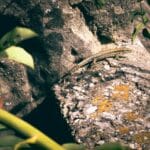The Cross River gorilla, a subspecies of the western gorilla, is one of the most endangered primates on the planet. Found primarily in the mountainous regions along the border of Nigeria and Cameroon, this elusive creature has garnered significant attention from conservationists and researchers alike. Among the various aspects of their biology and behavior, the study of their knuckles—specifically, the unique adaptations and characteristics of Cross River gorilla knuckles—has emerged as a focal point for understanding their evolutionary history and ecological needs.
The knuckles of these gorillas are not merely anatomical features; they serve as critical tools for locomotion and interaction with their environment, reflecting the broader adaptations that have allowed them to thrive in their specific habitats. The Cross River gorilla’s knuckles are particularly noteworthy due to their role in supporting the animal’s weight during knuckle-walking, a form of locomotion that distinguishes gorillas from other primates. This method of movement is essential for navigating the rugged terrain of their mountainous home, where steep slopes and dense vegetation present unique challenges.
The study of these knuckles provides insights into the evolutionary pressures faced by this subspecies, as well as the broader implications for understanding primate evolution as a whole. As researchers delve deeper into the anatomy and function of Cross River gorilla knuckles, they uncover not only the physical adaptations that have enabled these animals to survive but also the environmental factors that threaten their existence.
Key Takeaways
- Cross River Gorilla Knuckles are a unique and rare feature of the critically endangered Cross River Gorilla species.
- Studying rare gorilla knuckles is important for understanding the behavior, genetics, and overall health of the Cross River Gorilla population.
- The unique characteristics of Cross River Gorilla Knuckles include their size, shape, and the patterns of ridges and grooves on the surface.
- Methods used to study gorilla knuckles include non-invasive techniques such as photography, 3D scanning, and genetic analysis.
- Findings from the study have provided valuable insights into the population size, genetic diversity, and social structure of Cross River Gorillas, aiding conservation efforts.
The Importance of Studying Rare Gorilla Knuckles
Studying the knuckles of the Cross River gorilla is crucial for several reasons, particularly in the context of conservation biology and evolutionary research. Understanding Adaptation to Environment
The unique morphology of their knuckles can reveal information about their locomotion patterns, social behaviors, and even their dietary habits. By examining these physical traits, researchers can gain insights into how environmental pressures have shaped the evolution of the Cross River gorilla over time.
Implications for Conservation Efforts
Moreover, the study of rare gorilla knuckles has significant implications for conservation efforts. As one of the most endangered primate species, understanding the anatomical and functional aspects of Cross River gorillas can inform strategies aimed at preserving their populations. For instance, if certain physical traits are found to be critical for survival in their natural habitat, conservationists can prioritize protecting those specific environments.
Informing Rehabilitation Programs
Additionally, knowledge gained from studying these knuckles can aid in developing rehabilitation programs for orphaned or injured gorillas, ensuring that they can regain their natural locomotion abilities upon reintroduction into the wild.
Unique Characteristics of Cross River Gorilla Knuckles

The knuckles of Cross River gorillas exhibit several unique characteristics that set them apart from those of other gorilla subspecies. One notable feature is their robust structure, which is adapted to support the considerable weight of these large primates during knuckle-walking. The bones in their hands are thicker and more durable than those of other gorillas, allowing them to navigate rocky terrains without sustaining injuries.
This adaptation is particularly important given the steep and uneven landscapes they inhabit, where a misstep could lead to serious consequences. In addition to their structural adaptations, the skin covering the knuckles is also distinct. It is thicker and more textured than that found on other parts of their body, providing additional grip and protection against abrasions as they traverse through dense underbrush or rocky surfaces.
This specialized skin helps prevent injuries that could arise from frequent contact with rough terrain. Furthermore, researchers have noted variations in knuckle morphology among individual Cross River gorillas, suggesting that there may be a degree of plasticity in response to environmental conditions or social behaviors. Such variations could provide valuable data for understanding how these animals adapt to changing habitats or social structures.
Methods Used to Study Gorilla Knuckles
| Method | Description |
|---|---|
| Observational Studies | Researchers observe gorillas in their natural habitat to study their knuckle usage and behavior. |
| Anatomical Studies | Gorilla cadavers are dissected to study the structure and function of their knuckles. |
| Biomechanical Analysis | Researchers use specialized equipment to measure the forces and movements involved in gorilla knuckle usage. |
| Comparative Studies | Gorilla knuckles are compared to those of other primates to understand their unique features and adaptations. |
To study the knuckles of Cross River gorillas effectively, researchers employ a variety of methods that combine both fieldwork and laboratory analysis. One common approach involves direct observation in their natural habitat, where scientists can document locomotion patterns and behaviors associated with knuckle-walking. By using high-speed cameras and motion analysis software, researchers can capture detailed footage of how these gorillas move and interact with their environment.
This observational data is crucial for understanding the functional significance of their knuckle morphology. In addition to field observations, researchers often utilize advanced imaging techniques such as X-ray computed tomography (CT) scans to analyze the internal structure of gorilla knuckles. This non-invasive method allows scientists to visualize bone density and morphology without harming the animals.
By comparing CT scans from Cross River gorillas with those from other subspecies, researchers can identify specific adaptations that may have evolved in response to environmental pressures. Furthermore, genetic analyses can complement these studies by revealing how evolutionary processes have shaped the physical characteristics of these primates over time.
Findings and Discoveries from the Study
Recent studies focusing on Cross River gorilla knuckles have yielded fascinating findings that enhance our understanding of this endangered subspecies. One significant discovery is the correlation between knuckle morphology and habitat type. Researchers have found that gorillas living in more rugged terrains tend to have thicker and more robust knuckles compared to those in less challenging environments.
This suggests that physical adaptations are closely linked to ecological factors, highlighting the importance of preserving diverse habitats for the survival of these primates. Another intriguing finding relates to social behavior and its impact on knuckle development. Observations indicate that male Cross River gorillas often engage in displays of strength and dominance that involve extensive use of their knuckles during interactions with other males.
This behavior may contribute to the development of stronger knuckle structures over time, as individuals who are more adept at using their physical attributes may have greater reproductive success. Such insights underscore the complex interplay between behavior, environment, and physical adaptation in shaping the evolution of this rare subspecies.
Implications of the Study for Conservation Efforts

Informing Conservation Strategies
The study of Cross River gorilla knuckles has far-reaching implications that extend beyond mere academic curiosity. It plays a vital role in informing conservation strategies aimed at protecting this endangered species. By understanding how specific physical traits contribute to survival, conservation efforts can be guided to preserve critical habitats that support these adaptations.
Preserving Critical Habitats
For instance, if certain terrains are found to be essential for maintaining robust knuckle structures, conservationists can prioritize these areas for protection against deforestation or human encroachment. This targeted approach can help ensure the long-term survival of the Cross River gorilla population.
Enhancing Rehabilitation Programs
Furthermore, findings related to social behavior may influence rehabilitation programs for orphaned or injured gorillas. If certain behaviors are linked to successful locomotion or social integration within groups, rehabilitation efforts can be tailored to encourage these behaviors in captive settings. This could enhance the chances of successful reintroduction into the wild, ultimately contributing to population recovery efforts.
Future Research and Conservation Efforts
As research on Cross River gorilla knuckles continues to evolve, several avenues for future investigation emerge. One promising direction involves exploring how climate change may impact the habitats critical for these primates’ survival. Changes in temperature and precipitation patterns could alter vegetation types and availability, potentially affecting both food sources and locomotion pathways.
Understanding these dynamics will be essential for developing adaptive management strategies that account for shifting environmental conditions. Moreover, interdisciplinary approaches that integrate genetic studies with ecological research could yield deeper insights into how evolutionary processes shape physical traits in response to environmental pressures. By collaborating with geneticists, ecologists, and conservation biologists, researchers can create a more comprehensive understanding of Cross River gorillas’ adaptations and vulnerabilities.
Such collaborative efforts will be crucial for devising effective conservation strategies that address both immediate threats and long-term sustainability.
The Significance of Rare Cross River Gorilla Knuckles
The study of rare Cross River gorilla knuckles represents a critical intersection between evolutionary biology and conservation science. By examining these unique anatomical features, researchers gain valuable insights into how this endangered subspecies has adapted to its challenging environment while also uncovering broader patterns relevant to primate evolution as a whole. The findings from such studies not only enhance our understanding of Cross River gorillas but also inform vital conservation efforts aimed at preserving their populations in an increasingly threatened world.
As we continue to explore the complexities surrounding Cross River gorilla knuckles, it becomes evident that every aspect of their biology is intricately linked to their survival. The knowledge gained from these studies will play a pivotal role in shaping future conservation strategies, ensuring that we take informed actions to protect one of our planet’s most remarkable yet vulnerable species. The significance of rare Cross River gorilla knuckles extends beyond mere anatomical interest; it embodies a broader commitment to safeguarding biodiversity and fostering a deeper appreciation for the intricate web of life on Earth.
For those interested in learning more about the biodiversity and conservation efforts in Cameroon, where the Cross River gorilla is found, you might find the article “3 Reasons Why 20th May is Celebrated in Cameroon: Not National Unity in Diversity” insightful. This article explores significant cultural and historical aspects of Cameroon, providing context that can enhance understanding of the environmental and conservation challenges in the region. You can read more about it here.
FAQs
What are cross river gorilla knuckles?
Cross river gorilla knuckles refer to the distinctive knuckle-walking method of movement used by the critically endangered Cross River gorilla, a subspecies of the western gorilla found in the Cross River region of Nigeria and Cameroon.
Why are cross river gorilla knuckles important?
The knuckle-walking method of movement is important for the Cross River gorilla as it allows them to navigate their forest habitat with ease, using their strong arms and knuckles to move through the dense vegetation.
How do cross river gorilla knuckles differ from other gorilla species?
Cross River gorilla knuckles are similar to those of other gorilla species, as all gorillas are known for their knuckle-walking method of movement. However, the Cross River gorilla is a distinct subspecies with its own unique genetic and physical characteristics.
What threats do cross river gorilla knuckles face?
The main threats to the Cross River gorilla, including their knuckles, are habitat loss, poaching, and human encroachment. These threats have led to a decline in their population and put them at risk of extinction.
How can we help protect cross river gorilla knuckles?
Conservation efforts focused on protecting the Cross River gorilla’s habitat, reducing poaching, and promoting sustainable development in the region are crucial for the protection of the species, including their distinctive knuckles. Additionally, supporting organizations and initiatives dedicated to gorilla conservation can make a positive impact.


